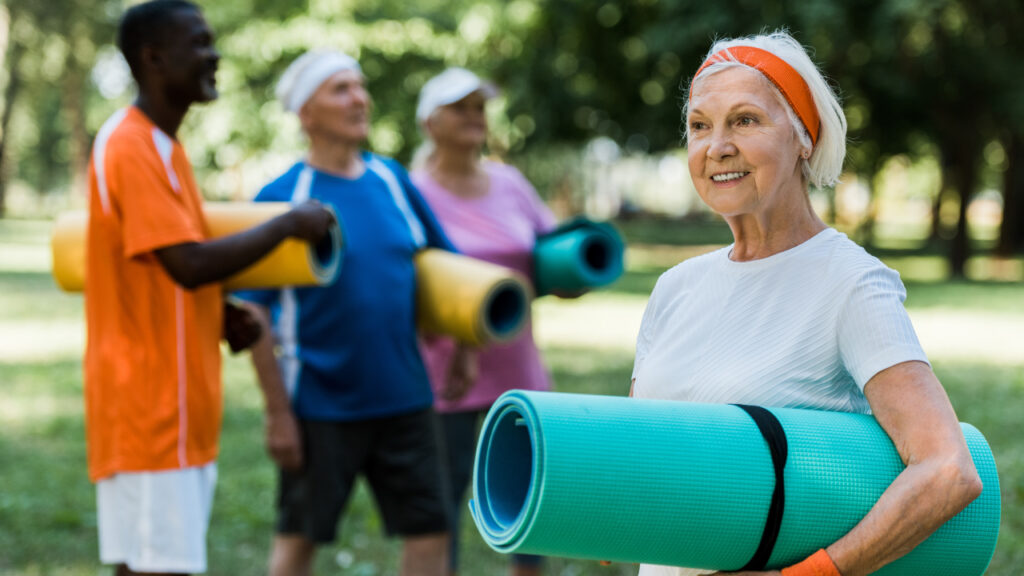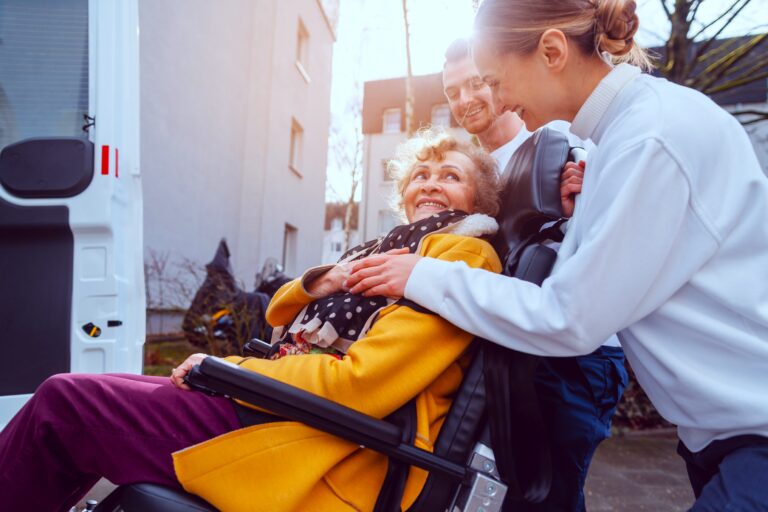As the years go by, something happens almost invisibly in the human body: the muscles start to lose mass and strength. This condition has a name – sarcopenia – and affects millions of people around the world, especially from the age of 60. But there’s a lot you can do to stop it and even reverse it. And it all starts with getting to know it better.
Key points of the article
- Sarcopenia is the progressive loss of muscle mass and strength, more common after the age of 60
- It can affect mobility, balance and the ability to perform everyday tasks
- Sedentary lifestyles, poor diet and chronic diseases are factors that contribute to its development
- It is possible to halt or even reverse sarcopenia with regular exercise and a high-protein diet
- Supplements such as whey protein, vitamin D or creatine can be useful in some cases
- Maintaining an active lifestyle is the best way to prevent this condition and preserve autonomy over the years.
What is sarcopenia?
It is a progressive disease characterized by the loss of muscle mass, strength and physical performance. Although it is more common in people over the age of 60, the process begins much earlier: around the age of 30 or 40, the body is already slowly starting to lose muscle. From the age of 65, this loss tends to accelerate.
In practice, what happens is that your muscles get smaller and weaker. And this doesn’t just mean that you lose the strength to open a bottle or carry shopping bags. Sarcopenia affects mobility, balance and the ability to perform basic everyday tasks such as getting up from a chair, climbing stairs or walking safely.
What are the symptoms?
The signs of sarcopenia directly affect a person’s autonomy and can lead to loss of independence and, in more serious cases, the risk of falls, fractures and hospitalization. They can appear discreetly, but become increasingly evident over time.
The most common include:
- Constant muscle weakness
- Faster tiredness during normal activities
- Difficulty climbing stairs or getting up from a chair
- Slower gait and less physical endurance
- Loss of balance and frequent falls
- Visible reduction in muscle volume, especially in the arms and legs.
What causes sarcopenia?
Aging is the main culprit, but not the only one. Several factors contribute to the development of sarcopenia:
- Sedentary lifestyle: lack of physical activity is one of the biggest allies of muscle loss
- Poor diet: a diet low in protein and essential nutrients weakens muscles
- Chronic diseases: such as diabetes, kidney failure, arthritis, cancer or COPD (chronic obstructive pulmonary disease)
- Chronic inflammation: the body in “constant alert mode” can degrade muscle tissue
- Hormonal changes: such as a drop in testosterone or growth hormone
- Obesity: especially when associated with sarcopenia (sarcopenic obesity), can aggravate the condition
- Immobilization: being bedridden for prolonged periods, even due to illness or recovery.
How is it diagnosed?
There is no single test to diagnose sarcopenia. Usually, symptoms are assessed using a simple questionnaire called the SARC-F, which measures how difficult it is to make basic everyday movements (getting up, walking, climbing stairs, etc.).
Tests can then be carried out such as:
- Grip strength (measured with a hand-held dynamometer)
- Chair test (to see how many times the person can stand up without using their arms)
- Gait test (assessing walking speed)
- Body composition analyses, such as DEXA or BIA, which measure the amount of muscle in the body.

What is the treatment for sarcopenia?
The good news is that sarcopenia can be treated and even reversed, especially if it is detected in the early stages. The main strategies are simple lifestyle changes:
1. movement is essential
Physical exercise is the most powerful weapon against sarcopenia. Ideally, you should do strength training (such as lifting weights, using elastic bands, doing squats) as well as aerobic exercise such as walking. Two to four sessions a week can make a difference.
2. Eating well is just as important as moving
A balanced diet rich in quality proteins (meat, fish, eggs, legumes, dairy products) is essential for rebuilding and maintaining muscles. Over the years, the body needs more protein for the same effect, so it’s worth increasing your intake.
3. Supplements can help
In some cases, it can be beneficial to include supplements such as:
- Whey protein
- Leucine (an amino acid that stimulates muscle synthesis)
- Vitamin D (especially if there is a deficit)
- Creatine (to increase strength and energy)
- Omega-3 (helps reduce inflammation)
- Collagen and magnesium, to support muscle tissue and joints.
But beware: supplements should always be used under the guidance of a health professional.
Sarcopenia or muscle atrophy: what's the difference?
Muscle atrophy is a more general term and means the loss of muscle mass for various reasons, which can happen at any age. Sarcopenia is a specific form of muscle atrophy associated with ageing and a decline in muscle function.
How can sarcopenia be prevented?
It is possible to grow old with strength, mobility and independence, and it all starts with small gestures in everyday life. Keeping your muscles active and well-nourished makes all the difference.
A longitudinal study published in the journal Ageing International in 2025 analyzed data from the UK Biobank and concluded that regular moderate to vigorous physical activity significantly reduces the risk of developing sarcopenia in middle-aged adults.
The study highlights that only light-intensity activities do not have the same protective effect.
So here are some practical tips:
- Get moving every day, even if it’s just walking
- Do strength training adapted to age and physical condition
- Eat a diet rich in protein and nutrients
- Avoiding tobacco and alcohol in excess
- Sleep well and keep well hydrated
- See your doctor regularly.
If sarcopenia or another health condition makes it difficult for you to get to appointments, exams or treatments, you ‘re not alone. Ambula offers a transportation service for non-emergency patients, with comfort, safety and support tailored to your needs. A simple and safe way to continue taking care of your health, even when your mobility is not what it used to be.




